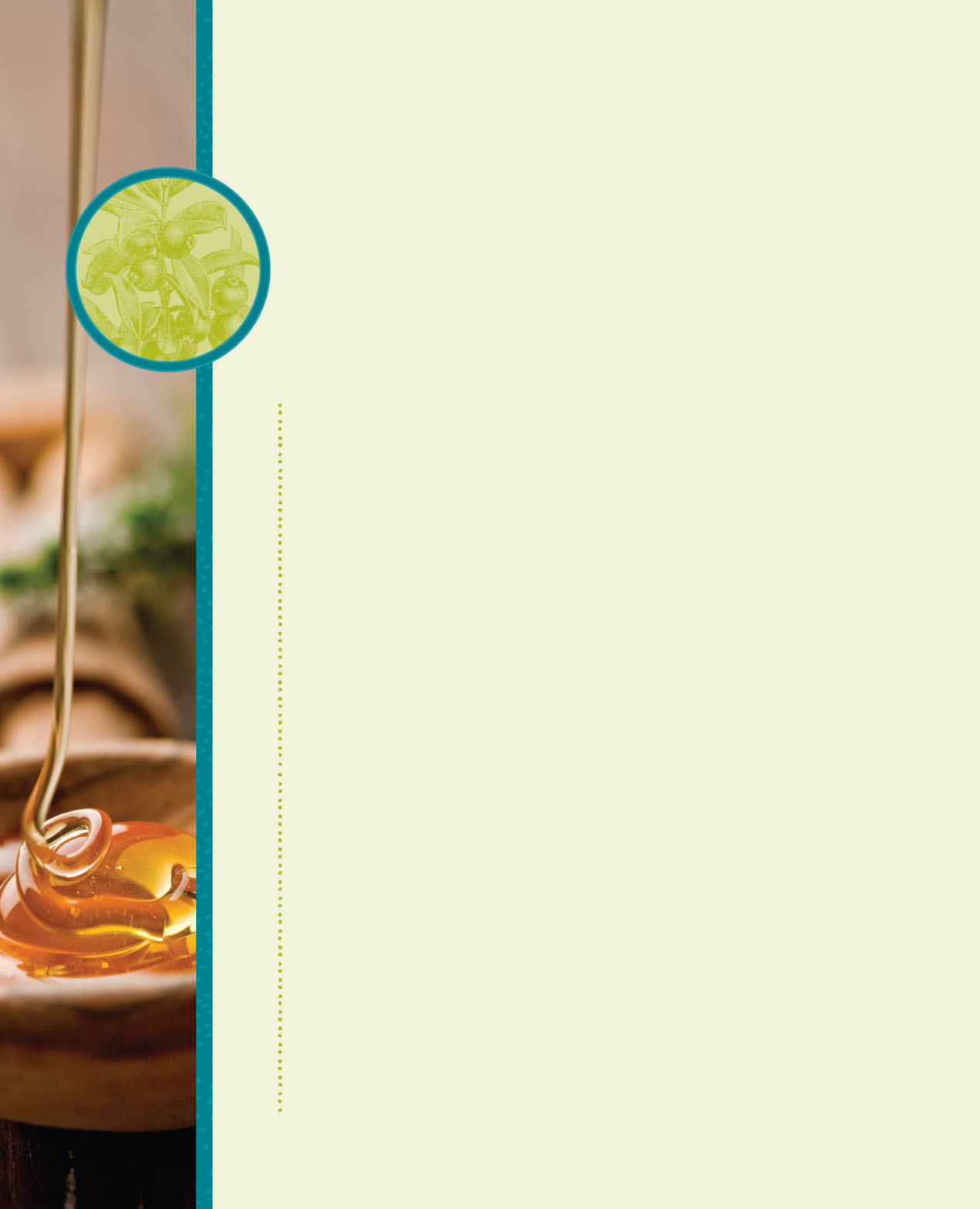
Real Food Pantry
The Skinny on Sweeteners
Desserts rely on sweeteners for flavor, moisture, and texture. I grew up on standard white table sugar and loved every empty calorie. It wasn’t until later that I came to prefer alternativ e sweeteners, because they allowed me to enjoy eating desserts without suffer ing the in- evitable sugar crash that followed. While some people notice it more than others, refined sugar spikes your blood sugar levels, releasing insulin in your body, which then causes blood sugar levels to plummet.
Besides the roller-coaster ride we experience as the body works so hard to stabilize its blood sugar level, white sugar is a highly processed food—exactly what those of us interested in good health are trying to avoid. In fact, the processing itself makes white sugar ethically unacceptable to many vegans, because bone char is used in the filtering of some cane sugar. (Vegans also typically avoid honey. Unlike white sugar, honey is minimally processed; whether or not you see it as acceptable in your own diet is a per- sonal choice.)
The following is a guide to some of my favorite alternative sweeten- ers. There are times when white sugar has its place, even in a healthy diet, but it should be used in moderation. Incorporating alternative sweeteners can allow you to enjoy desserts more frequently, without over-indulging in refined sugar.
Agave nectar is derived from the agave, a large, spiky plant native to Mexico. Similar to honey in consistency, but milder in flavor, agave nectar has only recently come into wide use as a sweetener; it’s long been used to produce tequila, however. Agave nectar has a low glycemic level, mean- ing it doesn’t raise blood sugar levels as much as refined sugar. It has trace amounts of minerals, including calcium, potassium, magnesium, and iron. Pure, organic agave nectar is a good natural sweetener for beverages like my
244